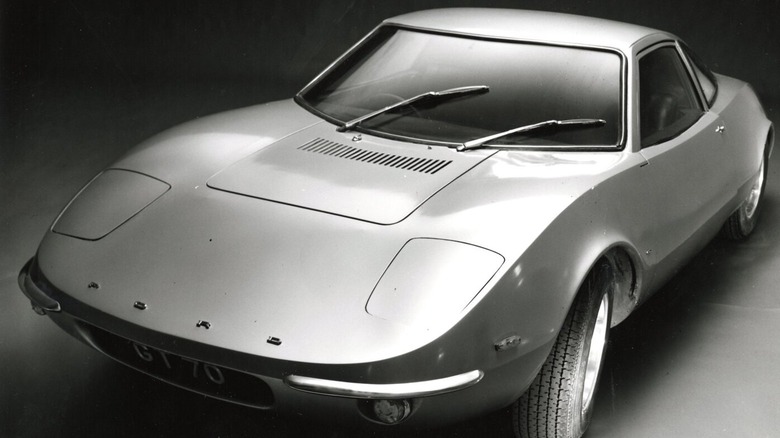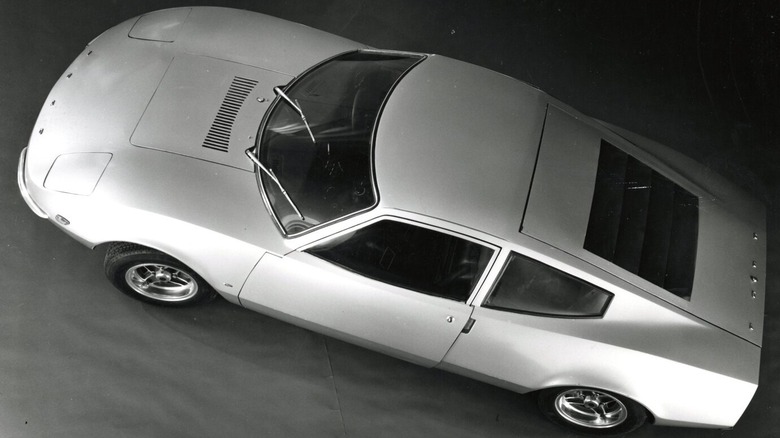The GT70 Ghia Concept That Might Have Changed The Way You Look At Fords
The 1960s and '70s were when the endurance and rally racing scenes really took off, particularly in Europe. The world's biggest automotive brands like Porsche, Renault, and Ferrari would submit rally cars designed to zoom down long stretches of road for hours on end at major racing events like Le Mans. One of the regular faces at these events was the Ford Motor Company, which had been trying to overhaul the classic Escort sedan into something that could really rule the racetrack. Following an underwhelming showing of a modified Escort at the 1970 Rallye Monte Carlo, Ford began tinkering with a new concept car.
This concept, the GT70 Ghia, would be a vehicle that could not only outpace the likes of Ferrari, Porsche, and Renault in terms of raw speed output, but do so even at climbing elevations, something the Escort had shown problems with previously. While the Ghia ultimately would not become the silver bullet of racing that Ford was aiming for, it was quite the ambitious vehicle in its own right, and an impressive bout of innovation from Ford's R&D department.
The GT70 is a direct descendant of another rally car, the GT40
The GT70 project was a joint effort between Stuart Turner, head of Ford U.K.'s racing division, and Len Bailey, who had previously served as chief engineer on another of Ford's racing projects, the GT40. The GT70 was, in many ways, a direct iteration on the GT40, opting for a similar mid-engine layout that would provide power directly to the vehicle's rear wheels via a transaxle. The engine chosen for the original prototype was the Ford 2.6-liter V-6, though the body was designed in such a way that it could receive all kinds of different engine types as necessary.
Multiple parts and components were co-opted from other Ford vehicles – the suspension came from the Ford Taunus and Cortina, the brakes came from a Mark IV Zephyr, and the five-speed transaxle came from the GT40. The only wholly original components were the chassis and body, the former of which was made of custom-built steel, while the latter was a full-fiberglass creation from Italian designer Ercole Spada. All of this was centered around a no-frills cockpit designed with input from famous rally racers like Roger Clark.
The GT70 project was canceled after just three years of development
It only took a few months after the 1970 Rallye Monte Carlo to whip up a GT70 prototype and get it out on the road. The vehicle first appeared at the 1970 Ronde Cevenole, though unfortunately, a myriad of technical issues kept it from going very far. The braking and suspension systems proved insufficient and the fiberglass body wasn't durable enough to handle the rigors of the race, among other faults.
The lack of immediate success in a race made it difficult to pitch the GT70 to Ford corporate, especially board members from the American division where rally racing wasn't very popular. The prototype was sent back to the drawing board, but due to a lack of funding, only stock Ford parts were available, which the developers couldn't quite puzzle together into a winning design. Three years later, after little success, the GT70 product was ultimately scrapped. Ironically, despite being what set this whole thing in motion, the Escort started winning races and ended up becoming the brand's rally car of choice, which rendered the GT70 unnecessary anyway. Ford wouldn't stop iterating on racing vehicles, of course, going on to develop the RS200 in the 1980s, though that vehicle was a bit of a problem child in its own right.


